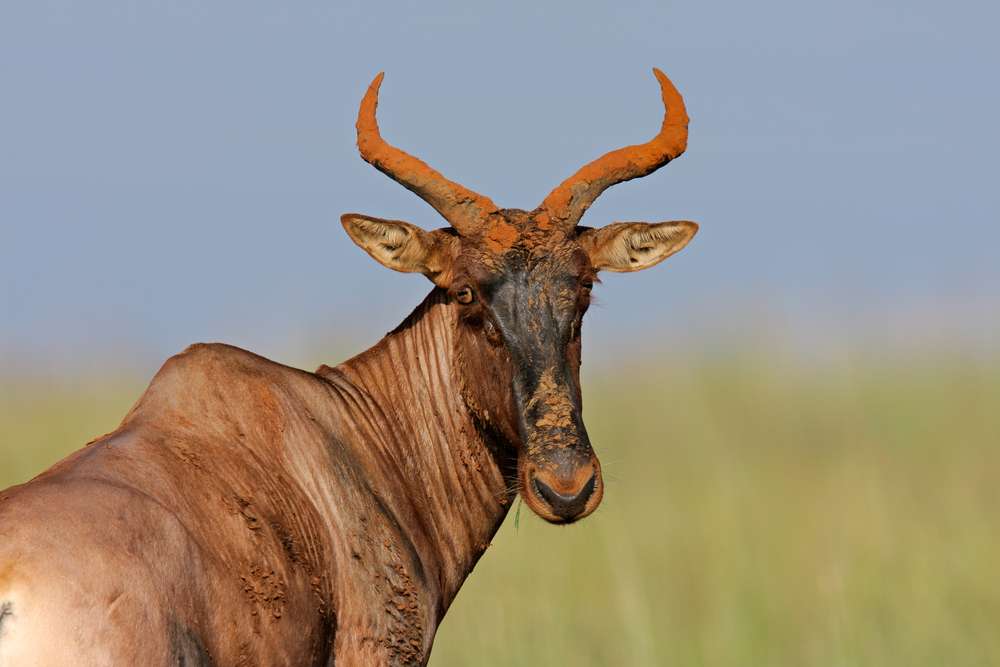Bangweulu Tsessebe
( Bangweulu Sassaby )
- Damaliscus lunatus superstes
- IUCN Status: Least Concern
- Trend: decreasing

- Kingdom: Animalia
- Phylum: Chordata
- Class: Mammalia
- Order: Artiodactyla
- Family: Bovidae
- Subfamily: Alcelaphinae
- Genus: Damaliscus
Share:
General Information
The Bangweulu tsessebe is endemic to Zambia and can only be found in the bangweulu flood plains. It is very similar to other subspecies of tsessebe and is one of the fastest antelope in the world.
Fun Facts!
Description
- Length: 150 to 230 cm
- Weight: up to 140 kg
- Lifespan: up to 15 yrs
Ecology and Behaviour
Tsessebe are social animals. Females form herds composed of six to 10, with their young. After males turn one year of age, they are ejected from the herd and form bachelor herds that can be as large as 30 young bulls. Tsessebe declare their territory through a variety of behaviors such as moving in an erect posture, high-stepping, defecating in a crouch stance, ground-horning, mud packing, shoulder-wiping, grunting and horning of the ground. Another far more curious form of territory marking is through the anointing of their foreheads and horns with secretions from glands near their eyes.
Conservation
It is categorised with a “Least concern” status on the IUCN Red list.
Distribution and Habitat
Tsessebe are found only in the Bangweulu Swamp region.
Interaction with humans
They can be legally hunted in the bangweulu flood plains game management areas. Hunters must purchase permits, as well as pay trophy fees upon shooting an animal. Local inhabitants of the floodplains occasionally hunt the animals for food under the permit system. The hunting season in typically between May and November.
No donation to this project yet.
| M | T | W | T | F | S | S |
|---|---|---|---|---|---|---|
| 1 | 2 | 3 | 4 | 5 | 6 | 7 |
| 8 | 9 | 10 | 11 | 12 | 13 | 14 |
| 15 | 16 | 17 | 18 | 19 | 20 | 21 |
| 22 | 23 | 24 | 25 | 26 | 27 | 28 |
| 29 | 30 | 31 | ||||


